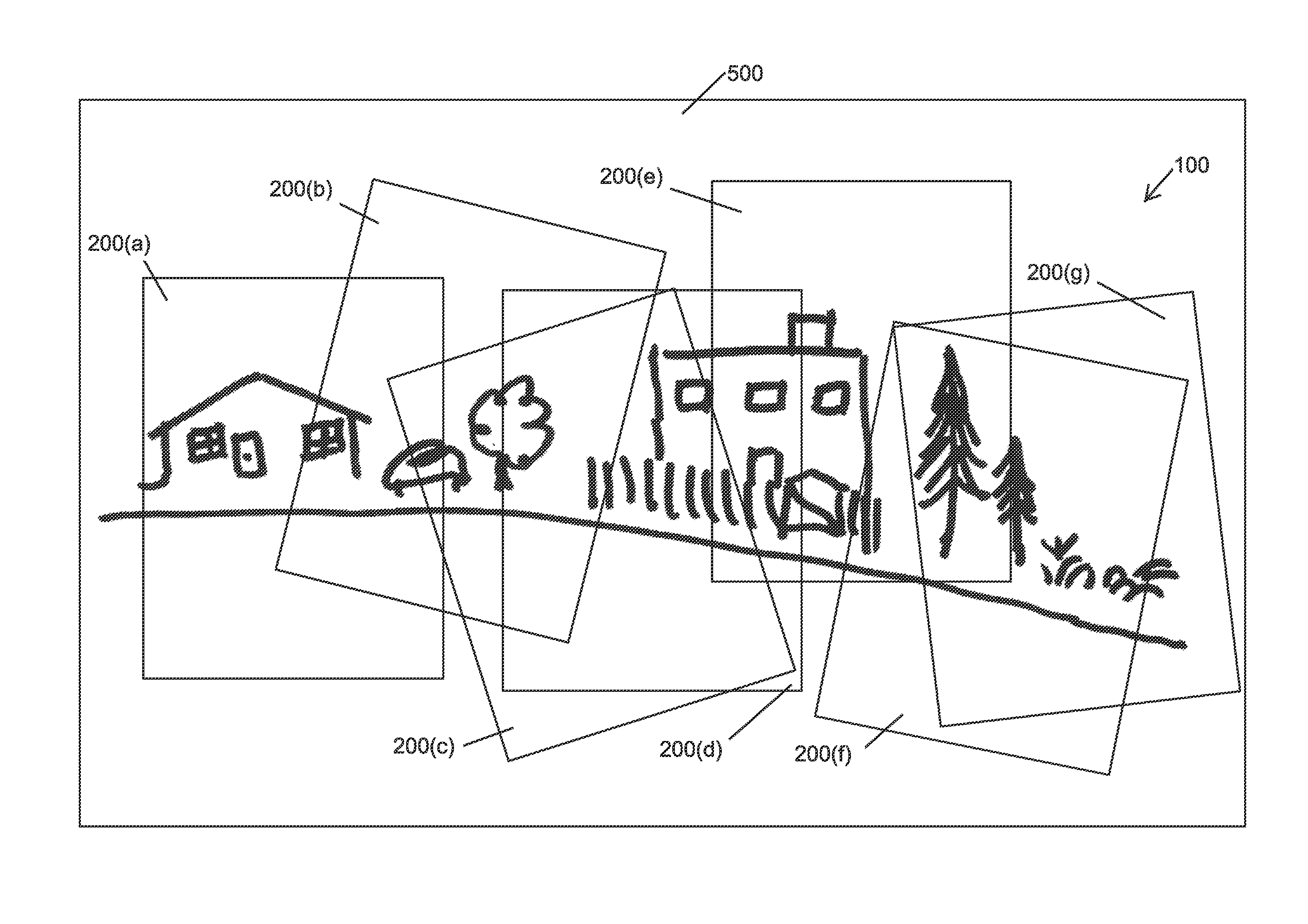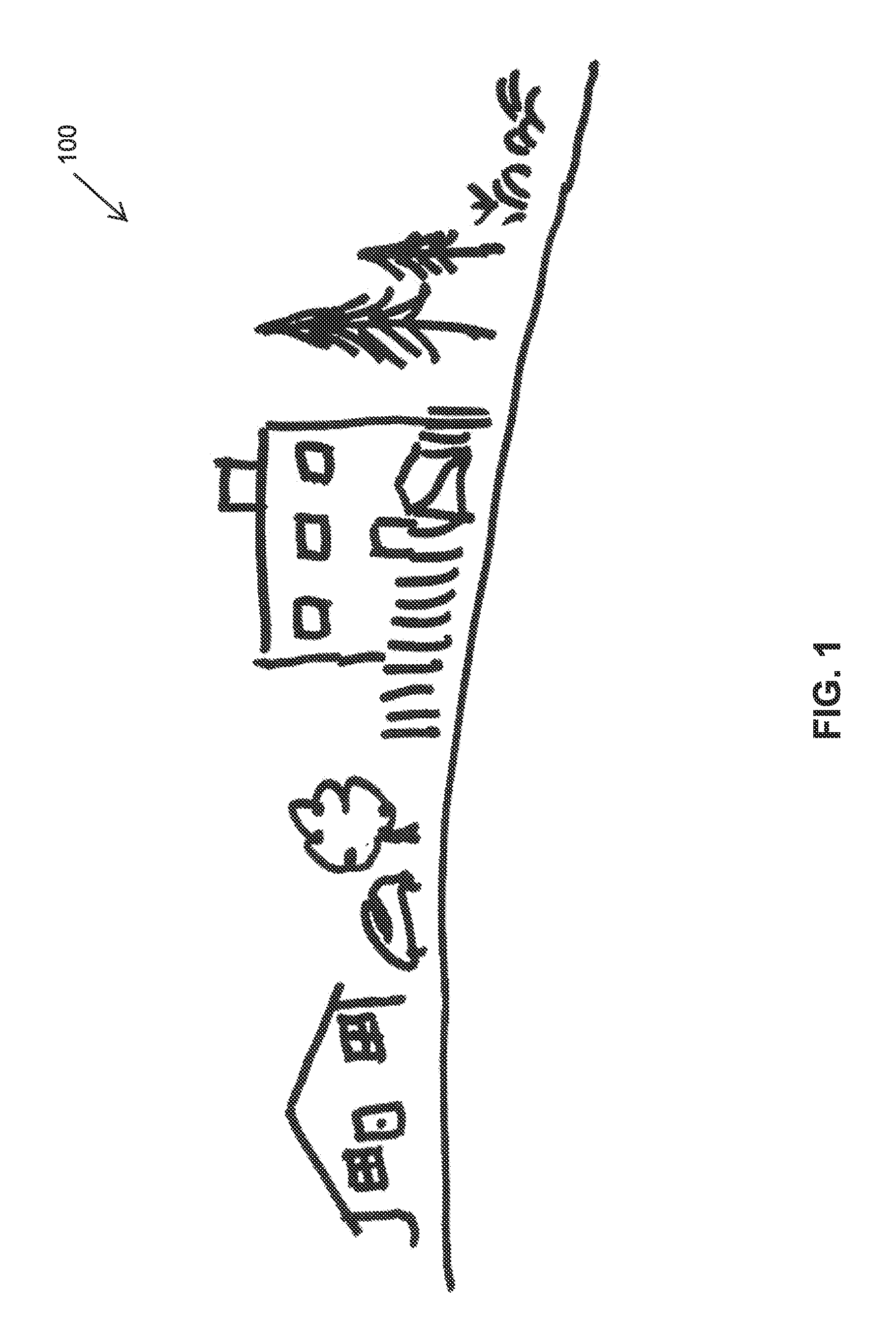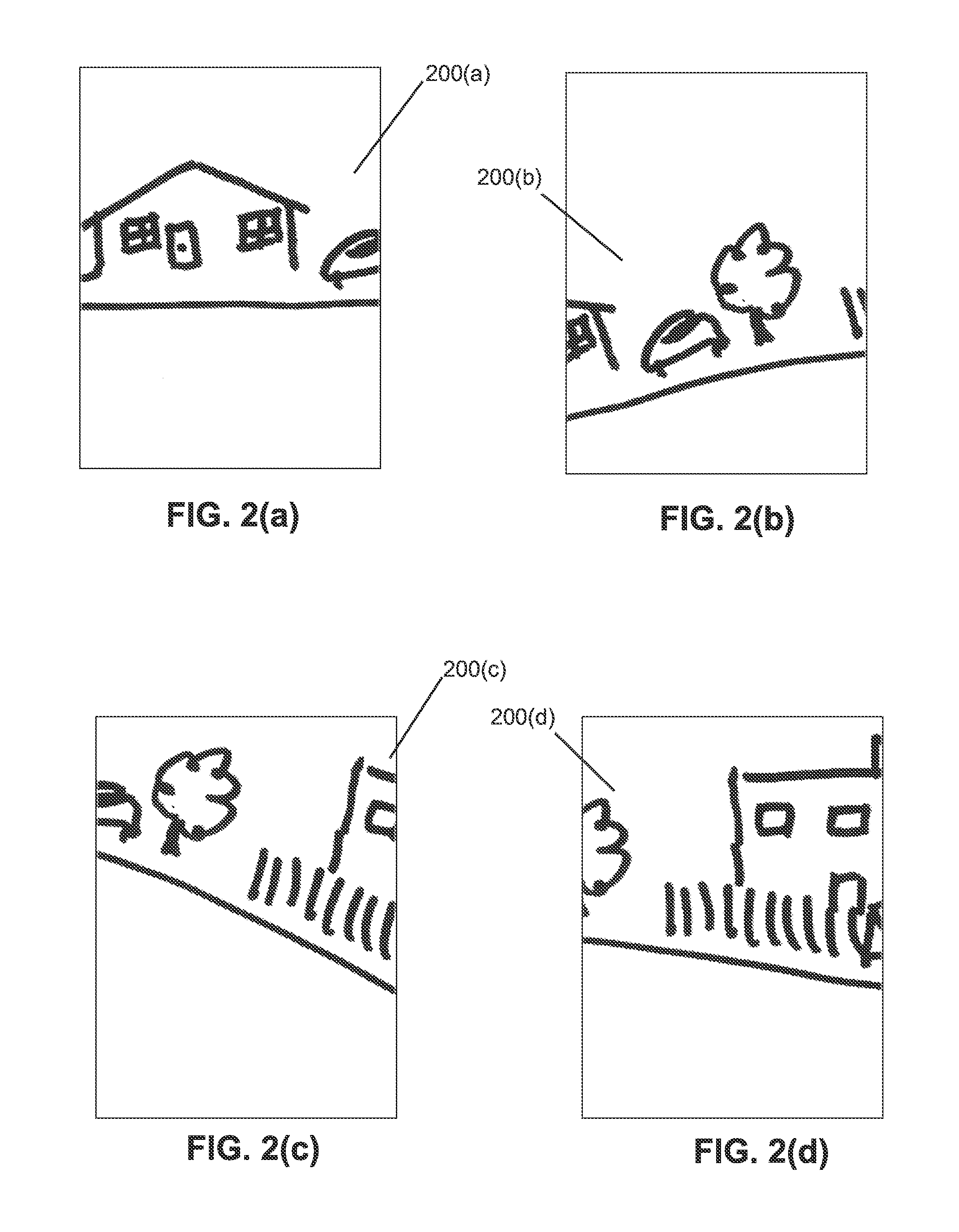Moving frame display
a display and moving frame technology, applied in the field of moving frame display, can solve the problems of non-ideal capture conditions, non-ideal acquisition equipment, and high degree of unwanted motion or jitter, and achieve the effects of reducing the number of moving frames, improving visual perception and interpretation, and simplifying the presentation of related video frames
- Summary
- Abstract
- Description
- Claims
- Application Information
AI Technical Summary
Benefits of technology
Problems solved by technology
Method used
Image
Examples
Embodiment Construction
[0029]Embodiments of the present invention provide a display that simplifies presentation of related video frames to enable a user to better see and interpret videos exhibiting a high degree of localized apparent image jitter. The following description is presented to enable one of ordinary skill in the art to make and use the invention and is provided in the context of a patent application and its requirements.
[0030]Various modifications to the preferred embodiment and the generic principles and features described herein will be readily apparent to those skilled in the art. Thus, the present invention is not intended to be limited to the embodiment shown but is to be accorded the widest scope consistent with the principles and features described herein.
[0031]For purposes of the present disclosure, the following terms have the following meanings. An actual scene refers to the real-world scene from which frames are recorded. A composite scene is a rendering of the frames in a boundle...
PUM
 Login to View More
Login to View More Abstract
Description
Claims
Application Information
 Login to View More
Login to View More - R&D
- Intellectual Property
- Life Sciences
- Materials
- Tech Scout
- Unparalleled Data Quality
- Higher Quality Content
- 60% Fewer Hallucinations
Browse by: Latest US Patents, China's latest patents, Technical Efficacy Thesaurus, Application Domain, Technology Topic, Popular Technical Reports.
© 2025 PatSnap. All rights reserved.Legal|Privacy policy|Modern Slavery Act Transparency Statement|Sitemap|About US| Contact US: help@patsnap.com



